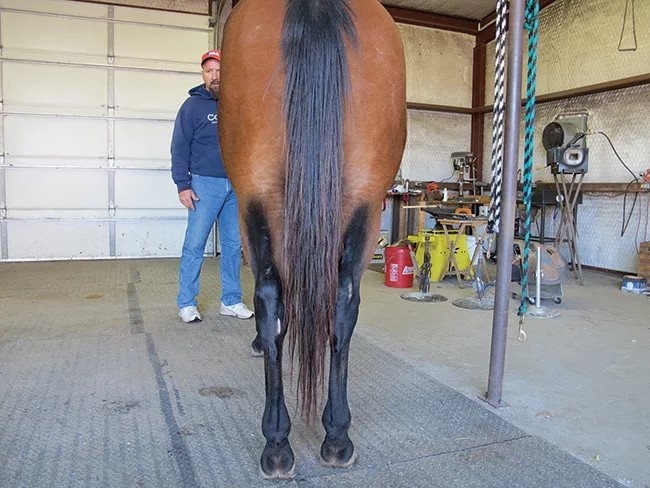American Farriers Journal
American Farriers Journal is the “hands-on” magazine for professional farriers, equine veterinarians and horse care product and service buyers.

If you shoe horses, you’ll come across base-narrow, high-inside heeled horses. I see them on a regular basis. This is common with Quarter Horses, which are plentiful where I live. For the first 20 years of my practice, I struggled trying to figure out what I was seeing and what was occurring whenever I’d encounter these horses.
Some farriers have the theory “go big or go home” when dealing with this issue. But they will over-correct and do more damage than what is fixed. I don’t like that. I think we’ll take something past a certain point and we do more damage than what we fix.
The following is an approach that has been around for years, and I’ve learned it from others. It has proven effective in resolving this specific issue.
When you begin working with a base-narrow, high-inside heeled horse (Figures 1), make sure to remove all of the dead and crushed heel when you trim. That lateral heel is loaded, and the horse stands base-narrow. First, make sure you have good horn to work with.
After trimming, you’ll still be off medially. You’ll notice that the bulbs are not level when measured parallel to the ground. However, that medial heel is the correct heel (Figure 2). Many farriers are consumed by taking that inside heel off to match the other. However, they will return 6 weeks later to find that the inside heel is back to where it was before the trim…